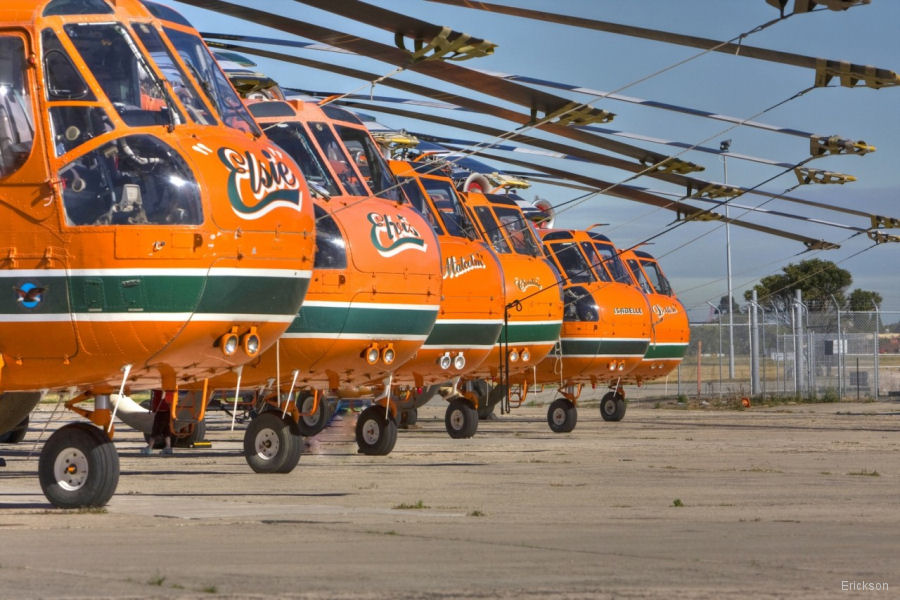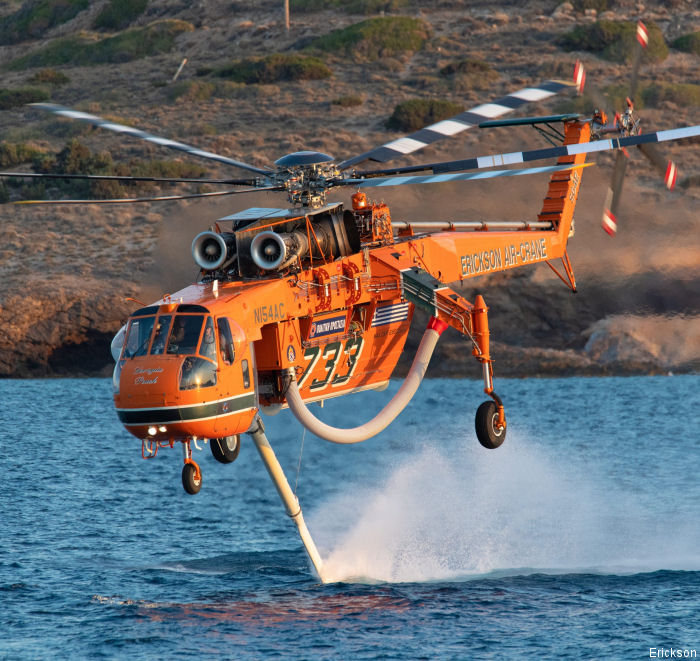When it comes to heavy lifting, both in construction and firefighting, few aircraft can match the versatility and power of the S-64 Skycrane. Originally designed for military and civilian heavy-lift operations, this remarkable helicopter has earned a reputation for its impressive capabilities and unique design. Let’s explore the key features and history of this iconic aircraft.

The Birth of the Skycrane
The S-64 Skycrane, also known as the Skycrane, was developed by Sikorsky Aircraft Corporation. Its design was first conceived in the late 1950s as part of a U.S. Army program aimed at creating a heavy-lift helicopter to transport equipment and supplies in challenging environments. The prototype, designated the YCH-54, made its first flight in 1962, and the aircraft quickly demonstrated its exceptional lifting power and versatility.
Design and Features
One of the most striking features of the S-64 Skycrane is its unique design. Unlike traditional helicopters, the Skycrane has a distinctive, narrow fuselage with no traditional cargo bay. Instead, it features an exposed, open frame that allows it to carry oversized and heavy loads externally. This design not only maximizes its lifting capacity but also provides a clear view for the pilot, ensuring precision when maneuvering large cargo.
- Heavy-Lift Capacity: The Skycrane can carry loads of up to 25,000 pounds (11,340 kg), making it one of the most powerful helicopters ever built. Its lifting capabilities are ideal for transporting construction materials, firefighting equipment, and large machinery.
- Versatile Configurations: The aircraft can be configured for various roles, including construction, firefighting, and disaster relief. It can be equipped with a variety of attachments such as specialized buckets for water or foam, making it a valuable asset in combating wildfires.
- Advanced Technology: The S-64 is equipped with advanced avionics and control systems, allowing for precise handling and stability even when carrying heavy loads. Its powerful twin-engine setup ensures reliable performance in demanding conditions.

Operational Roles
Over the years, the S-64 Skycrane has been employed in a wide range of missions:
- Construction and Heavy-Lift Operations: The Skycrane has played a crucial role in large-scale construction projects, including the assembly of infrastructure like bridges, dams, and power lines. Its ability to lift and place heavy components with precision makes it an invaluable tool for engineers and builders.
- Firefighting: Perhaps one of the most publicized roles of the Skycrane is its use in firefighting. The aircraft’s capacity to carry large volumes of water or fire retardant enables it to quickly combat wildfires, making it a critical asset for fire departments, especially in remote or difficult-to-access areas.
- Disaster Relief: The Skycrane has also been deployed in disaster relief efforts, where its heavy-lift capabilities are used to transport essential supplies and equipment to areas affected by natural disasters such as earthquakes and floods.
Legacy and Impact
The S-64 Skycrane’s impact on aviation and heavy-lift operations is profound. Its innovative design and remarkable capabilities have set a standard for heavy-lift helicopters, inspiring future generations of aircraft. The Skycrane has also influenced the development of other specialized helicopters, contributing to advancements in aerial logistics and disaster management.
Despite its impressive service record, the S-64 Skycrane has faced challenges, including evolving technology and changing operational needs. However, its legacy endures as a testament to the ingenuity and engineering excellence that defined its creation.

Conclusion: A Marvel of Engineering
The S-64 Skycrane stands as a marvel of aerospace engineering and a testament to the versatility and power of helicopters. Its unique design, exceptional lifting capacity, and diverse operational roles make it a standout in the world of aviation. Whether lifting massive construction materials, fighting wildfires, or aiding in disaster relief, the Skycrane has proven itself as an invaluable asset.
As technology continues to advance and new challenges arise, the legacy of the S-64 Skycrane will continue to inspire and influence the development of heavy-lift aircraft for years to come. Its enduring presence in the skies serves as a reminder of the incredible feats that can be achieved through innovation and engineering prowess.





